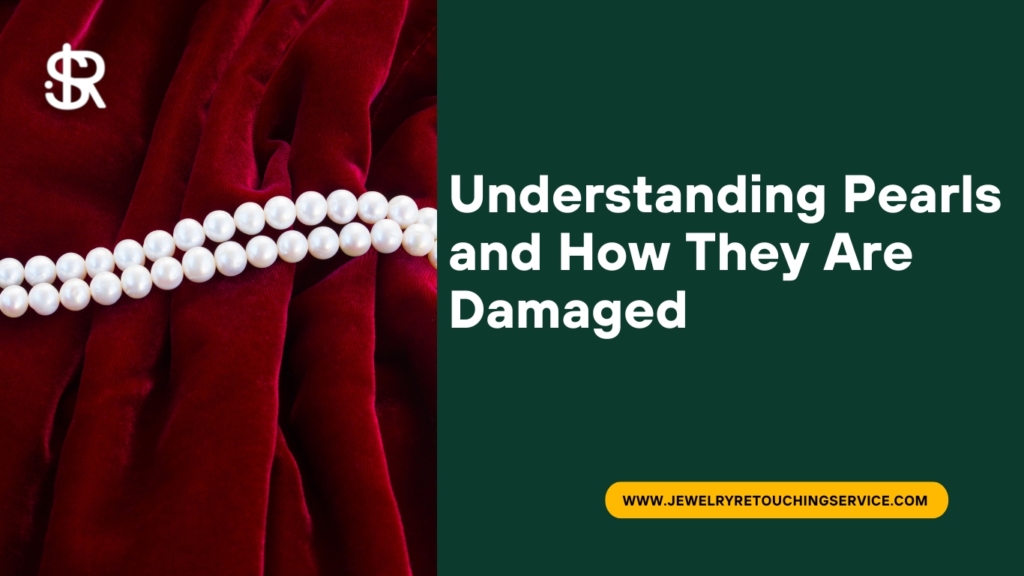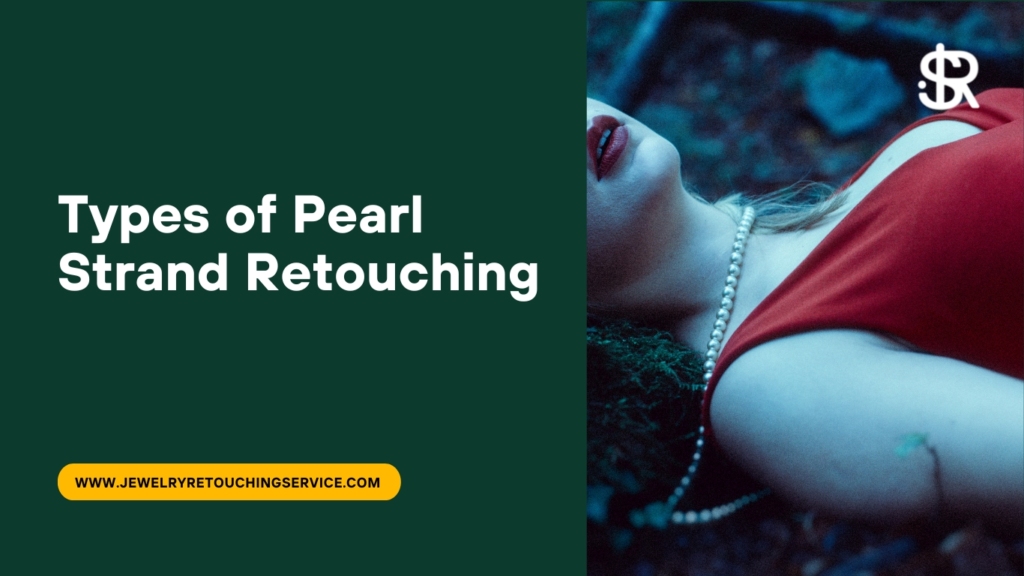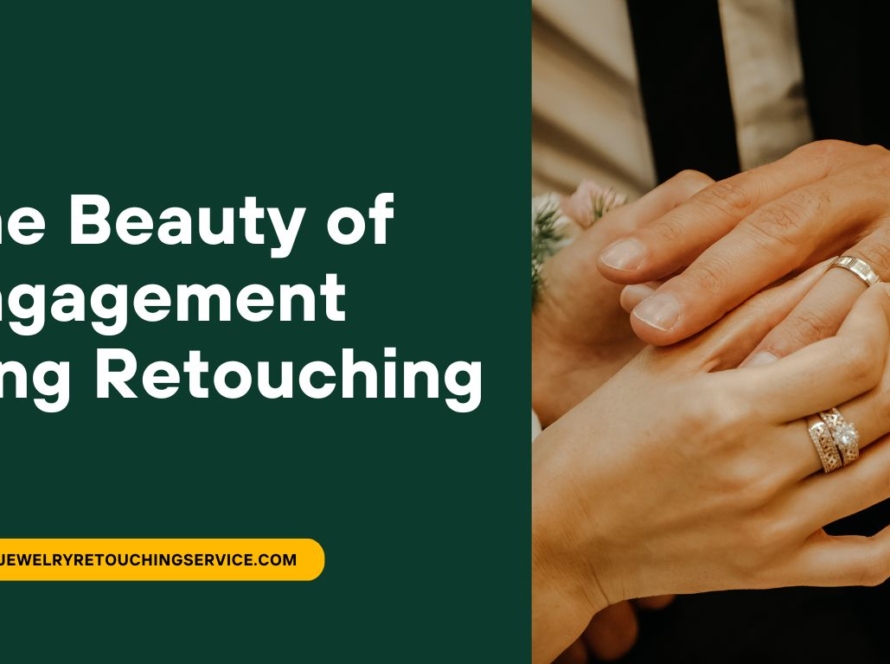Introduction to Pearl Strand Retouching: This section should provide an overview of the topic, explaining what pearl strand retouching is, why it is necessary, and what it entails. It should also highlight the significance of pearls as a precious gemstone and their value.

Understanding Pearls and How They Are Damaged:
This section should delve into the different types of pearls, how they are formed, and the factors that cause them to deteriorate over time. It should also explore the common types of damage pearls experience, such as chipping, discoloration, and peeling.

Types of Pearl Strand Retouching:
This section should discuss the different types of retouching techniques available, such as cleaning, filling, and restringing. It should also explain when each technique is most appropriate and what issues they address.

Pre-Retouching Preparation for Pearl Strands:
This section should detail the steps needed to prepare the pearl strand for retouching, such as assessing the damage, identifying missing pearls, and determining the necessary tools and materials.
Techniques for Cleaning Pearl Strands:
This section should provide a detailed explanation of the various methods for cleaning pearl strands, such as chemical cleaning, steam cleaning, and ultrasonic cleaning. It should also outline the precautions and risks involved in each method.
Filling and Replacing Missing Pearls in a Strand:
This section should explain how to fill and replace missing pearls in a strand, including selecting the appropriate size, shape, and color, and how to secure them in place.
Restringing Pearl Strands:
This section should detail the process of restringing a pearl strand, including the different types of stringing materials and knots, how to properly space the pearls, and how to secure the clasps.
Polishing Pearl Strands:
This section should explain how to polish a pearl strand to restore its luster and shine, including the proper techniques for buffing, cleaning, and protecting the pearls.
Use a soft cloth:
When polishing pearl strands, always use a soft, lint-free cloth. Avoid using paper towels or other rough materials that can scratch the pearls.
Avoid chemical cleaners:
Never use chemical cleaners, solvents, or abrasive substances on pearls. These substances can strip the pearls of their natural luster and cause permanent damage.
Use warm water:
If your pearl strands need cleaning, use warm water and a mild soap. Gently rub the pearls with the soapy water using a soft cloth, and then rinse with clean water.
Dry gently:
After washing your pearl strands, dry them gently with a soft cloth. Do not expose them to direct heat, such as a hairdryer or radiator, as this can damage the pearls.
Store properly:
Store your polished pearl strands in a jewelry box or pouch, away from other jewelry that can scratch them.
Professional polishing:
If your pearl strands require more extensive polishing or restoration, take them to a professional jeweler who specializes in pearl jewelry.
By following these tips, you can safely and effectively polish your pearl strands, keeping them looking their best for years to come.
Aftercare for Retouched Pearl Strands:
This section should offer tips and recommendations for how to care for a retouched pearl strand, such as avoiding exposure to chemicals, storing the pearls properly, and scheduling routine maintenance.
Handle with care:
After retouching, your pearl strand is more delicate and prone to damage. Handle it with care, and avoid pulling or tugging on the strand.
Store properly:
Store your pearl strand in a jewelry box or pouch to protect it from scratches and dust. Avoid storing it with other jewelry that could scratch or damage the pearls.
Clean with care:
Clean your retouched pearl strand gently using a soft cloth or chamois. Avoid using harsh chemicals or abrasive cleaners that could damage the pearls.
Avoid exposure to chemicals:
Avoid exposing your pearl strand to chemicals such as perfumes, hairsprays, and cosmetics. These chemicals can damage the pearls’ luster and surface.
Check for loose pearls:
Regularly check your retouched pearl strand for loose pearls or threads. If you notice any loose or damaged pearls, take your strand to a professional jeweler for repairs.
Restringing:
Depending on the quality of the retouching and the age of the strand, you may need to consider restringing your pearl strand every 2-3 years to ensure its longevity and durability.
By following these aftercare tips, you can help preserve the beauty and longevity of your retouched pearl strand.
Choosing a Professional for Pearl Strand Retouching:
This section should provide guidance on how to select a reliable and experienced professional for pearl strand retouching, including what to look for in a service provider, how to research and compare different providers, and what questions to ask during the consultation.
Answer: Pearl strand retouching is a process of repairing and restoring damaged or worn-out pearls in a necklace or bracelet strand. It involves various techniques, such as cleaning, filling, and restringing, to bring back the luster and beauty of pearls.
Answer: You can tell if your pearl strand needs retouching if it has lost its shine, has chipped or discolored pearls, or if the thread has worn out. Also, if the clasp is damaged, it is a sign that your pearl strand needs retouching.
Answer: If you have the necessary skills and tools, you can retouch your pearl strand by yourself. However, it is best to seek the help of a professional jeweler who has experience in pearl strand retouching.
Answer: The tools you need for pearl strand retouching depend on the specific repairs needed. Some common tools include a pearl reamer, knotting tweezers, a beading awl, and a pearl drill. You may also need jewelry glue, string, and a clasp.
Answer: The cost of pearl strand retouching varies depending on the extent of the repairs needed, the type of pearls, and the jeweler’s experience. It is best to get a quote from a professional jeweler before deciding to retouch your pearl strand.


